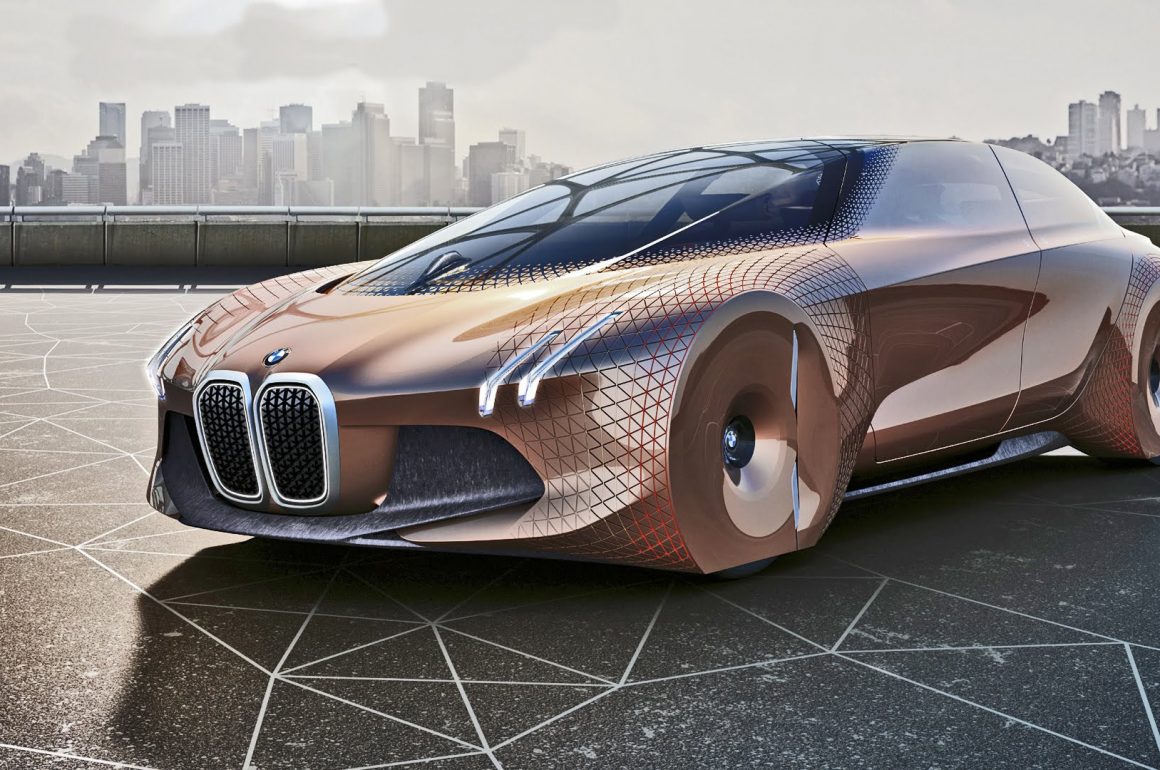
Ever since the first self-propelled road vehicle was produced in 1769, the automobile market has been developing, increasing and innovating designs and engineering techniques. Within 100 years, intelligent minds have been able to transform and develop a very simple and basic steam engine open top automobile (35 mph top speed), into a super sleek 16.4 litre Super Sport vehicle (268 mph top speed).
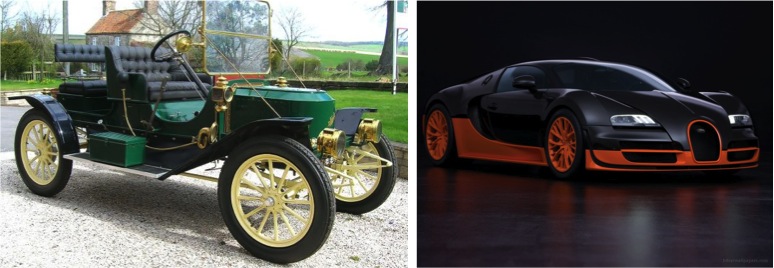 Left (Stanley Runabout 1908) Right (Bugatti Veyron Super Sport)
Left (Stanley Runabout 1908) Right (Bugatti Veyron Super Sport)
The Past
The vintage era witnessed the invention of the internal combustion engine, hydraulic brakes and tempered glass. One particular company that has been credited for its early success in the automotive industry is Ford Motors. In 1908, Henry Ford answered the cries for an affordable car, by producing the Model ‘T’, which originally retailed for $825.00, but was later reduced to $575.00 (a price tag that is quite ludicrous when compared to the prices of new cars today!)
When we take a look back, we can see how dramatically car designs and engineering have changed even within the past 60 years, and it makes us wonder, what could change in another 60 years?
 1920 (Duesenberg Model X) 1940 (1940 Chevrolet) 1960 (1964 Rambler Classic 770) 1980 (BMW E28 M5)
1920 (Duesenberg Model X) 1940 (1940 Chevrolet) 1960 (1964 Rambler Classic 770) 1980 (BMW E28 M5)
The Near Future
Ever since the discovery of climate change, manufacturers have been working hard to design vehicles that are environmentally friendly, economical and stylish. So far, companies like BMW, Hyundai, Mitsubishi and Tesla have either produced a number of technologically advanced hybrid vehicles that are partially powered by fuel and partially powered by an electric charge, or vehicles entirely dependent on an electric battery.
The newer all-electric cars like the Tesla ‘Model X’, a vehicle Tesla claims is the ‘safest, fastest and most capable sport utility vehicle in history’, contain a battery that utilises new technology and chemical variations to ensure efficiency, fire resistance, environmental care, rapid charging and increased distance coverage.
Here’s a selection of some of the more recent electric/ hybrid vehicles on the road today…
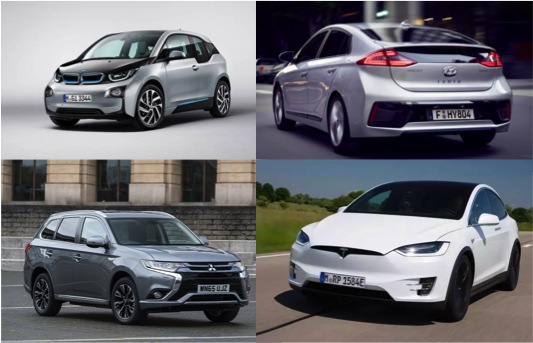
BMW (Model-i3) Hyundai (Model- IONIQ) Mitsubishi (Model-PHEV) Tesla (Model X)
“We are currently running the most dangerous experiment in history right now, which is to see how much carbon dioxide the atmosphere can handle before there is an environmental catastrophe” – Elon Musk (Tesla CEO)
More recently, motoring giants like BMW and Tesla have decided to merge 21st century technology with 21st century style by designing the BMW Roadster and Tesla Roadster. These models prove that manufacturers are focusing predominantly on producing super sleek electric sports cars, and mass producing electric and hybrid vehicles in the very near future. However, although it’s almost certain that the numbers of fossil fuel powered cars will decrease, battery operated vehicles are not the only environmentally friendly motors to soon be dominating our roads.
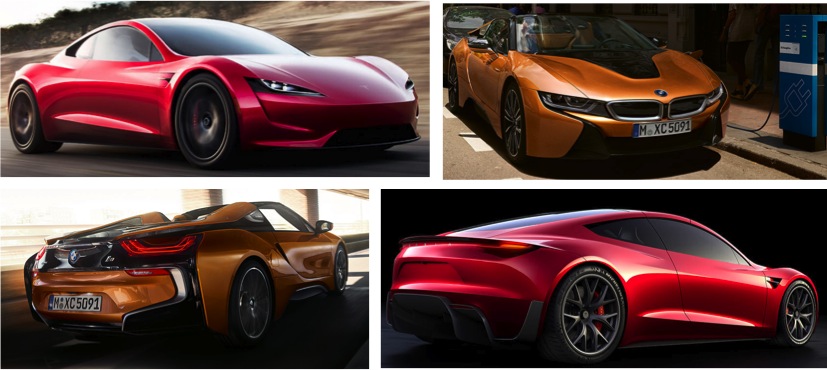 Credit: BMW and Tesla
Credit: BMW and Tesla
Riversimple are perfecting a distinctive vehicle they’ve nicknamed ‘RASA’, which uses hydrogen fuel cells to travel incredible distances of 300+miles on one tank. How does it work? Hydrogen is passed through an exchange membrane in the fuel cell, where it then combines with oxygen to form water and electricity.
The fuel then powers the four individual motors located inside each wheel, allowing the vehicle to reach 60 mph in just under 10 seconds, (so although ‘RASA’ may not be the fastest car on the market, it does the job of getting around well). Riversimple are currently in the early stages of perfecting the ‘RASA’ prototype, and so although we shouldn’t expect any of these quirky looking vehicles on our roads any time soon, the company’s success in framework development is promising!
 Credit: Riversimple
Credit: Riversimple
So what does the future hold?
Although electric vehicles are all the talk right now, the future has so much more in store for the motoring industry! The world must embrace all types of environmental friendly fuels, electric batteries and chemical variations and not depend on one concept. It’s obvious that what is stylish and trendy today, will be outdated in 100 years, and manufactures like the BMW Group have already designed vehicles they believe will be aesthetically and technologically relevant in the next 100 years. Feast your eyes on these bad boys…
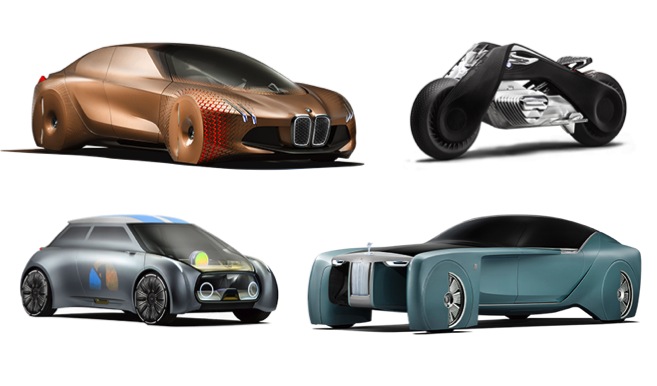
Credit: BMW Group
One of the largest and most successful motor enterprises of our time, BMW, is in amongst the group of vehicle manufacturers leading the way for the future of automobiles. For more information on the BMW Group’s plans for the next 100 years, check out its ‘Next 100 years’ page by clicking here.







